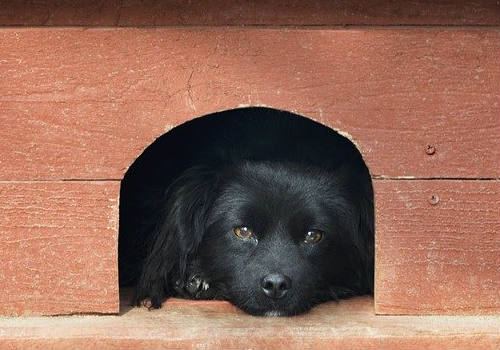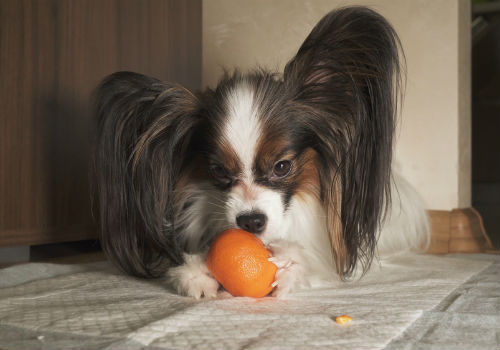Is there any canine feature more notable than the nose? We think not!
With over 300 million olfactory cells (cells responsible for a sense of smell), a dog’s nose is up to 100,000 times more powerful than a human’s.
For comparison, if the same were true for vision, then a dog could see something 3,000 miles away as clearly as we could see something a third of a mile away!
Without a doubt, a dog’s sense of smell is its most unique asset. That’s why police, search-and-rescue teams, and militaries employ dogs to sniff out drugs, bombs, missing persons, and even cancer.
Dogs seem to tolerate — even love — all kinds of smells that we humans find abhorrent. Poop, garbage, other dogs’ butts… sometimes our pups seem to seek out the nastiest smells possible.
But even they have their limits. Certain scents are so offensive to dogs that even the slightest whiff will repel them faster than dog breath repels us.
Here are your dog’s most-hated smells and why they’re so awful. You’ll probably agree with some of them — but others are sure to surprise you!
The Top 5 Smells that Repel Dogs
5. Vinegar

Humans have a love-hate relationship with vinegar. It’s an invaluable ingredient in many recipes from all types of cuisines, and it’s also a super-affordable household cleaner.
But vinegar’s smell can be undeniably overwhelming. Sharp and acidic, a strong whiff can make your nose tingle and your eyes water, especially if it’s undiluted.
Now imagine that smell but 100,000 times more potent.
Suddenly it becomes a lot easier to understand why your dog heads for the hills when you break out the vinegar!
Dogs hate the smell of vinegar so much that simply spraying a little on a piece of furniture is enough to keep your dog away from it for weeks. It’s an excellent trick to keep in mind if you can’t keep your pup from dirtying your favorite armchair or hogging your bed at night.
But if that’s not your goal, make sure to minimize your vinegar usage to keep your dog comfortable. Cooking with it usually isn’t an issue, but consider saving those salt and vinegar potato chips for when your pup isn’t around!
4. Alcohol
Here’s another polarizing substance that dogs hate the smell of — alcohol.
Whether it’s for first aid, cleaning, cooking, or drinking, alcohol has an unmistakable odor. In particular, rubbing alcohol has a powerful scent as it’s not diluted with other substances like beers, wines, and liquors are.
Some people have a peculiar affinity for the smell of alcohol, while others are repulsed by it. But dogs almost universally hate it — and, again, the reason goes back to the strength of a dog’s nose.
Love it or hate it, alcohol has a, well, intoxicating scent. Like vinegar, it can have physical effects on the person smelling it: tingliness in the nose and nausea are common.
Amplify that by tens of thousands, and you’ve got a dog’s sensory nightmare.
Humans have probably grown to like the smell of alcohol because we also like its effects. But dogs don’t have that association, so the scent is purely negative.
In fact, most vets even advise against using rubbing alcohol to clean a dog’s wounds. The smell is so off-putting that the harm outweighs the benefits.
3. Citrus

Now our tastes diverge from our dogs’ in a curious way.
Most people enjoy the scent of oranges, lemons, grapefruits, and other citrus fruits. They’re crisp and fresh with just a little tang to keep things interesting.
We use citrus in cooking because it’s delicious. Its acidic properties make it great for cleaning as well, and many household products are citrus-scented.
Scented candles, perfumes, room sprays, soaps, supplements, medicines… citrus is absolutely everywhere.
That’s great for us, but not so great for dogs. To a dog, the smell of citrus is eye-wateringly bad — and in some cases, it’s even painful.
Why?
Citrus fruits produce citrus oil and citric acid. These are used in various products to impart a citrus scent and the acidic properties of the fruit.
But they’re highly irritating to a dog’s nose, airway, and lungs. And if they’re consumed in large amounts, they can lead to central nervous system depression.
So while a citrusy aroma is pleasant to us, it’s painful for dogs. You can use this to your advantage by rubbing a tiny bit of citrus on shoes, cords, and other things you don’t want your dog messing with.
2. Mothballs
Nobody enjoys the smell of mothballs. They’re supposed to smell bad to moths, of course — that’s why we keep them next to clothes we don’t want to get eaten.
But that distinct, musty scent isn’t appealing to humans, either. It’s not vomit-worthy, but it’s definitely not anybody’s favorite smell.
Dogs, though, take mothball hatred to a whole new level. That yucky scent is just about guaranteed to keep your dog far away from your closet, dresser, or laundry room.
Aside from smelling bad, mothballs are dangerous to dogs as well. They’re not just deodorizers — they also contain an extremely poisonous pesticide to humans, cats, dogs, and other animals.
Depending on your dog’s size, consuming just one mothball could be enough to do severe damage. Symptoms of mothball toxicity include nausea, vomiting, and shaking.
In severe cases, mothball toxicity can lead to kidney and liver failure. Death can occur if emergency treatment is not obtained.
If you use mothballs, keep them in their sealed container and out of reach of your pets. Mothballs should not be used as a dog deterrent; there are far safer options equally effective.
1. Hot Peppers

Some folks can’t get enough capsaicin, the compound found in hot peppers responsible for that trademark spiciness.
For others, even a tiny bit is enough to make them feel like they’re on fire.
Dogs fall squarely in the latter category. Even just a whiff of hot peppers like jalapenos, habaneros, or poblanos will send your pup scrambling out of the kitchen.
That’s because a dog doesn’t need to consume a hot pepper to feel capsaicin effects. The smell alone is sufficient to experience that spicy, mouth-on-fire sensation, which dogs find incredibly unpleasant.
Scent and taste are intricately linked — both dogs and humans have scent receptors on their tongues and in their mouths. Because of this, when a dog smells chili peppers, the effect is similar to having eaten one.
Peppers don’t have to be fresh to repel dogs. Red pepper flakes, cayenne pepper powder, and chili powder are spice rack staples that have the same effect on dogs as fresh hot peppers.
Be very careful around your dog when cooking with hot peppers, fresh or dried. Even the residue of the pepper on your hands can hurt your dog’s skin.
It’s especially important to avoid contacting your dog’s mouth, nose, or eyes after touching hot peppers. These membranes absorb the capsaicin exceptionally well and can become dangerously irritated and inflamed.
Inhaling large amounts of powdered hot peppers can irritate your dog’s lungs, leading to respiratory distress. You’ll need to seek emergency veterinary care if your dog experiences breathing trouble due to hot peppers.
It’s best to keep your dog out of the kitchen when dealing with spicy peppers. And always wash your hands thoroughly when you’re done cooking or eating — your dog will thank you for it!
On the other hand, carefully-crafted pepper spray can be used to deter dogs from furniture and other objects.
Remove the seeds and white veins from the pepper, grind up the remaining bits and mix them with water. Then lightly spray anything you don’t want your dog touching.



My dog has object guarding problem…he just pick the things like important documents, clothes and many more. Sometimes he picks the things which could be dangerous for her…when we try to snatch from him he growls too much and comes to bite…I really need help